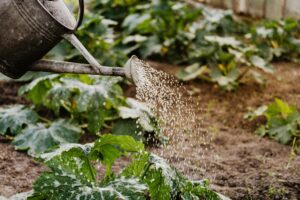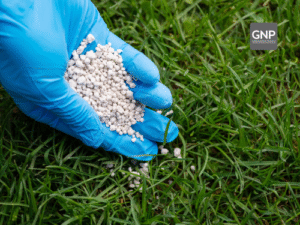A lush, green lawn is the pride of any Australian homeowner, but maintaining it isn’t as simple as just mowing and watering. Many people unknowingly make mistakes that damage their grass, leading to patchy growth, weeds, and disease.
If your lawn isn’t looking its best, you might be guilty of one (or more) of these common lawn maintenance mistakes. The good news? Fixing them is easier than you think. Let’s dive in!

One of the biggest mistakes homeowners make is cutting their grass too short. While it might seem like a time-saver, scalping your lawn weakens the grass, making it more susceptible to drought, weeds, and pests.
Stresses the grass – Shorter blades mean less photosynthesis, reducing the plant’s ability to produce energy.
Exposes soil to sunlight – This encourages weed seeds to germinate.
Increases water loss – Shorter grass dries out faster.
Follow the ⅓ rule – Never remove more than one-third of the grass height in a single mow.
Adjust mower height seasonally – Keep grass slightly longer in summer (about 5–7 cm) to protect roots from heat.

Watering seems straightforward, but many people either overwater or underwater their lawns. Both can cause serious damage.
Watering too lightly – Shallow watering encourages weak root systems.
Watering at the wrong time – Midday watering leads to evaporation, while evening watering can promote fungal growth.
Overwatering – This drowns roots and wastes water.
Water deeply but less frequently – Aim for 2–3 cm of water per week, including rainfall.
Water in the early morning – This reduces evaporation and fungal risks.
Use a rain gauge – Helps track how much water your lawn actually gets.
Healthy soil = healthy grass. Many people focus only on the surface but forget that the foundation of a great lawn lies beneath.
Compacted soil (water pools instead of soaking in)
Thatch build-up
Poor drainage or excessive dryness
Test your soil – Check pH levels (ideal range for most grasses is 6.0–7.0).
Add organic matter – Compost or soil conditioners improve structure.
Aerate annually – Helps oxygen, water, and nutrients reach roots.

Fertiliser is essential, but too much—or the wrong kind—can burn your lawn or cause excessive growth, leading to more mowing and thatch.
Applying too much nitrogen
Fertilising at the wrong time (e.g., during drought)
Using the wrong fertiliser for your grass type
Use slow-release fertilisers – They feed grass gradually.
Follow seasonal schedules – More in growing seasons (spring/autumn), less in winter.
Always water after applying – Prevents root burn.
Thatch is a layer of dead grass and roots that accumulates over time. A little is good, but too much prevents water and nutrients from reaching the soil.
Dethatch if layer exceeds 1 cm – Use a dethatching rake or machine.
Regular aeration helps – Reduces compaction and breaks down thatch.
A dull mower blade tears grass instead of cutting it cleanly, leading to brown, frayed tips and increased disease risk.
Sharpen blades at least twice per mowing season.
Replace blades if they’re nicked or bent.
Lawn care isn’t a one-size-fits-all job. Different seasons require different approaches.
Summer: Mow higher, water deeply, avoid fertilising in extreme heat.
Autumn: Aerate, fertilise, and overseed if needed.
Winter: Reduce mowing, avoid heavy foot traffic.
Spring: Apply pre-emergent weed control, fertilise, and repair bare patches.
Timing matters with herbicides. Applying them incorrectly can harm your lawn or fail to kill weeds.
Pre-emergent herbicides – Apply before weeds sprout (early spring).
Post-emergent herbicides – Use on actively growing weeds.
Spot-treat weeds – Avoid blanket spraying.
Compacted soil suffocates roots. Aeration creates small holes to let air, water, and nutrients penetrate.
Cool-season grasses – Early spring or autumn.
Warm-season grasses – Late spring to early summer.

Not all grasses thrive in the same conditions. Picking the wrong type leads to constant struggles.
Buffalo – Drought-tolerant, shade-resistant.
Kikuyu – Hardy, fast-growing.
Couch – Loves full sun, great for high-traffic areas.
Zoysia – Low-maintenance, soft underfoot.
A beautiful lawn is within reach. Avoid these common mistakes and follow best practices. If you need top-quality lawn care products, Garden Nursery Products has you covered!
We’re your trusted Gold Coast garden supply store, offering premium fertilisers & soil conditioners, effective pesticides & fungicides, landscaping tools & supplies, and expert advice for a thriving garden.
Visit us today or shop online!
Added to cart
Check out our shop to see what's available